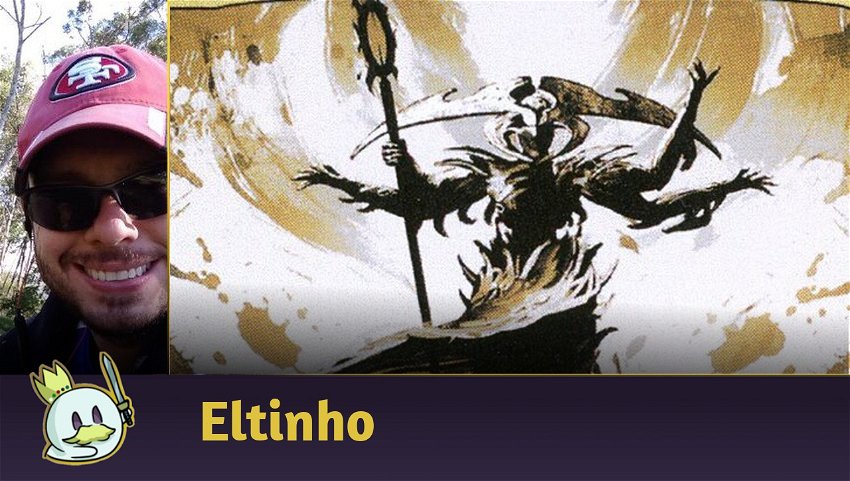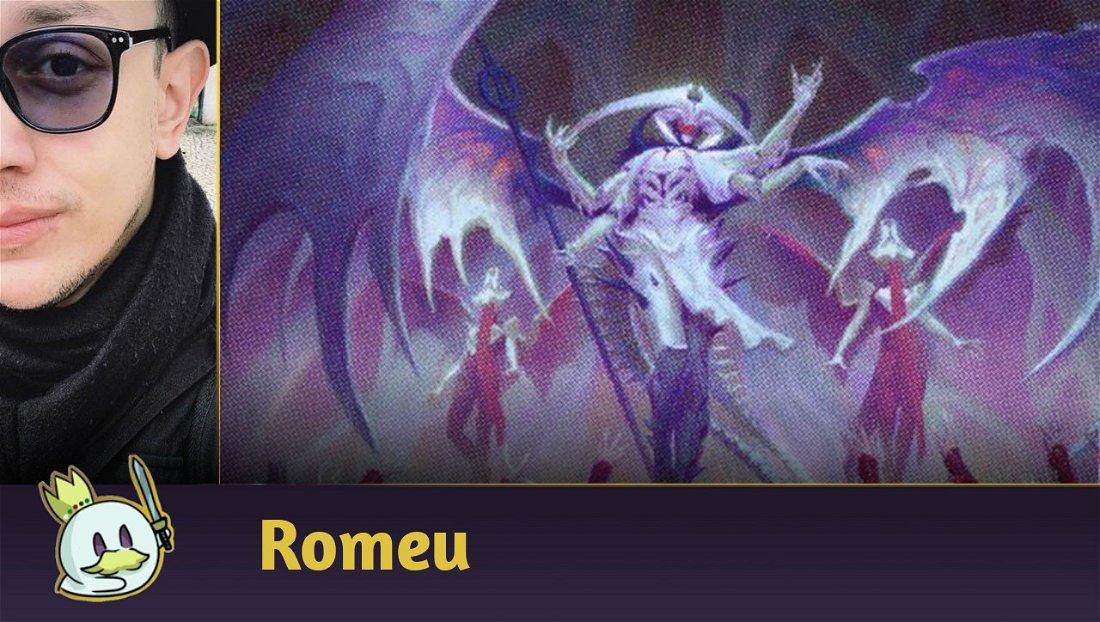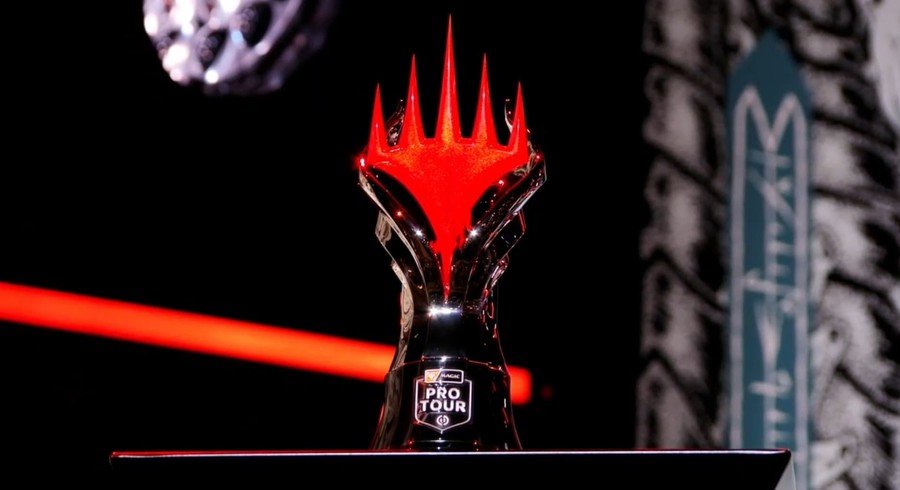Presentation
Hello my friends! We're back to our regular Deck Techs schedule! Since Magic has been Magic, using your graveyard as a resource has been a viable tactic. Over the years there have always been ways to put cards in the graveyard (Bazaar of Baghdad, Survival of the Fittest, Attunement) and ways to make use of these cards (Animate Dead, Reanimate, Replenish). But the basis of what came to be the Legacy format Reanimator only appeared with the best tutor for its graveyard was released in Odyssey: Entomb!

First in the late Extended and then later in Legacy, with each new expansion players looked for the best card to take a tour to the graveyard and find their way back to the board – Verdant Force, Akroma, Angel of Wrath, Sphinx of the Steel Wind, Iona, Shield of Emeria were some of the reanimation targets until his arrival:Griselbrand, released in 2012 in Avacyn Restored.
Variations of Reanimator have since appeared in Legacy – Mono Black, Dimir, Rakdos, Golgari, Jund, etc – but no other creature has disputed the position of the deck's main reanimator target. Until now.
Atraxa, the Great Unifier
The Dimir version of Reanimator was for a long time the most popular and most stable, almost a Combo-Control deck, with access to two of the pillars of the format, Force of Will and Brainstorm.

But since Faithless Looting saw the light of day, many players have migrated to a more explosive version of the deck, and with the arrival of – one of the most recurring themes of my tech decks: Incarnations – Grief, Rakdos-based versions became the main way to build the archetype. Until the release of Phyrexia: All Will be One.

Enter Atraxa, Grand Unifier. There's a meme floating around the internet about what Atraxa's role in Reanimator is: being exiled to pay the alternate cost of Force of Will. And that, despite the joke, is not entirely wrong.
The Rakdos or Mono base lists play with 4 Griselbrand plus some Archon of Cruelty, as surplus copies can be used to fuel Grief or Unmask and open the path to your combo. The multicolored Atraxa can be used to pay both black and blue spells.

But so, what, isn't Grisel better than her? Well, it depends. In most cases, the Demon ends up drawing more cards than the Phyrexian Angel, but not infrequently sometimes the life cost of activating its ability gets in the way, especially if Reanimate was used to bring it him to the battlefield, and the opponent manages to kill him before it has the opportunity to attack.
In practice, both offer flying 7/7 bodies with Lifelink that draws a truckload of cards. Atraxa defends better because of Vigilance and adds flexibility to blue, Griselbrand has greater draw potential. Therefore, in the list that we will see below, Atraxa wins the dispute (and we still have a copy of Grisel) with 4 copies.
Decklist
Deck Construction
Going back to its Dimir roots, the base deck adds Brainstorm, Daze and Force of Will, as well as using Careful Study instead of the forceful Faithless Looting to the skeleton of Entomb + reanimation spells.

One interesting change from the old lists and tied to the addition of Atraxa is that the deck swapped the original 4 Exhume/2 Animate Dead setting for 4 Animate Dead/2 Dance of the Dead. This is to increase your chances of hitting more cards with the Angel's triggered ability, important in case another round of reanimations is needed.
We still have Lotus Petal to speed up the game, but we give up Dark Ritual – this is the trade-off that the deck slower, but we're willing to exchange explosion for more consistency and protection.

Finally, the deck is complemented with some discard effects (Grief/Thoughtseize) and Archon of Cruelty as a complementary reanimation creature, a very common situation when you have Careful Study but not Entomb.
Mulligan
The most explosive lists look for hands capable of going off in the first turn and basically throw away almost all hands that are incapable of doing so.
Not the case here - you do want to, if possible, ranimate on turn one, but you can afford to keep hands without that option as long as they aim to find AND protect that effect. So, it's ok to keep a hand with a Careful Study that will become an Atraxa or an Archon in the second turn with a backup of Force of Will or Daze.
Just be careful not to keep too reactive hands that you can't apply pressure right away: although you have elements of Control, you're fundamentally a Combo deck, don't forget.
Building the Sideboard

One of the perks of going back to blue is having access to post-sideboard Show and Tell to play around graveyard removals. The opponent's face holding Surgical Extraction in hand or with a Leyline of the Void on the board when this spell resolves is priceless. But watch out for Pyroblast/Red Elemental Blast.
Shriekmaw is a card that started to appear as a way to deal with Initiative decks by first killing their troublesome creatures and then hitting unblockable to steal the dungeon for you.

Faerie Macabre and Coffin Purge are obviously meant to tackle other graveyard-focused decks. Always good to remember that Entomb can fetch this instant spell – many players forget about it and think that it only finds creatures.
Chancellor of the Annex is an option against combo decks. Iona, Shield of Emeria is another card to consider. For these games, you also have the option of going for Flusterstorm and Thoughtseize.

Ultimately, Brazen Borrower and The Filigree Sylex (basically a Ratchet Bomb with a pedigree) serve as generic answers to whatever you might encounter along the way.
In addition to the listed cards, other common ones to be found on the sideboard of the Dimir version are Echoing Truth, Dauthi Voidwalker, Sheoldred, the Apocalypse. Snuff Out and Serra's Emissary.
Sideboard Guide
UR Delver
The main answer against graveyard they run is Surgical Extraction, so be careful not to leave the graveyard exposed. Force of Will isn't as useful, as taking a Blast on it usually ends the day. The easiest way to force your monsters is through discards. Shriekmaw can resolve a Murktide Regent that fell too early.
IN

OUT

White Initiative
Chalice of the Void and Thalia, Guardian of Thraben get in the way of your game plan too much. Daze usually doesn't help much here because of the Sol lands (Ancient Tomb and City of Traitors and Lotus Petal.
Their graveyard hate range from Leyline of the Void to Faerie Macabre, both of which you can ignore with Show and Tell. On the draw, you can side-in some of the discards out, and you can go higher in play - the factor here is trying to stop Chalice of the Void from coming into play.
Adjust some Reanimate out if you're going to get more cards. Most of the principles here apply to Death and Taxes as well.
IN

OUT

Mirror
It doesn't hurt to tell, but Animate Dead and Dance of the Dead can reanimate cards from any graveyard, so leaving a creature lying around in the graveyard is asking for trouble, which is why Careful Study loses some of its value.
IN

OUT

Grixis / Jeskai / Bant / 4C
Here you are the beatdown, and you need to win as soon as possible, so they don't have time to find answers.
In general, they don't usually have much effect against graveyards other than Surgical Extraction, so it's not worth switching to the Show and Tell plan, just get more discards and try to combo over their defenses.
IN

OUT

Red Prison
It's like facing an Initiative with more problematic cards: in addition to Chalice, Blood Moon and Trinisphere are bad news. Their hate is almost exclusively Leyline of the Void and Unlicensed Hearse, but they also have Blasts to disrupt Show and Tell, but that's still the best way.
IN

OUT

Doomsday / Storm
Although they are very different decks, our role against these archetypes is the same: combo as quickly as possible so that the extra Atraxa/Griselbrand cards can create enough disruption to prevent them from killing you.
You can't be too cautious in these matchups, as time is on their side.
IN

OUT

Conclusion
Here I end the visit through the Phyrexian's perfectionism. I hope the Praetors' little friend can add new ideas to the format.
Until next time!














— Comentarios 0
, Reacciones 1
Se el primero en comentar